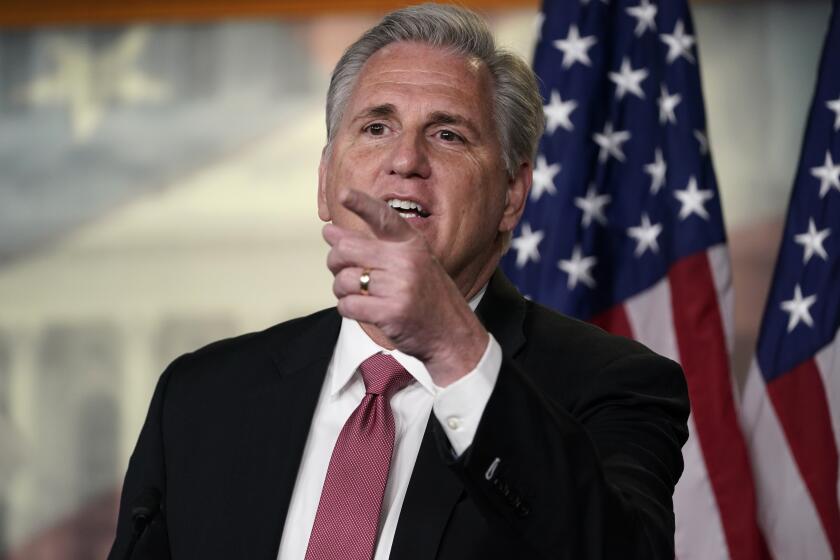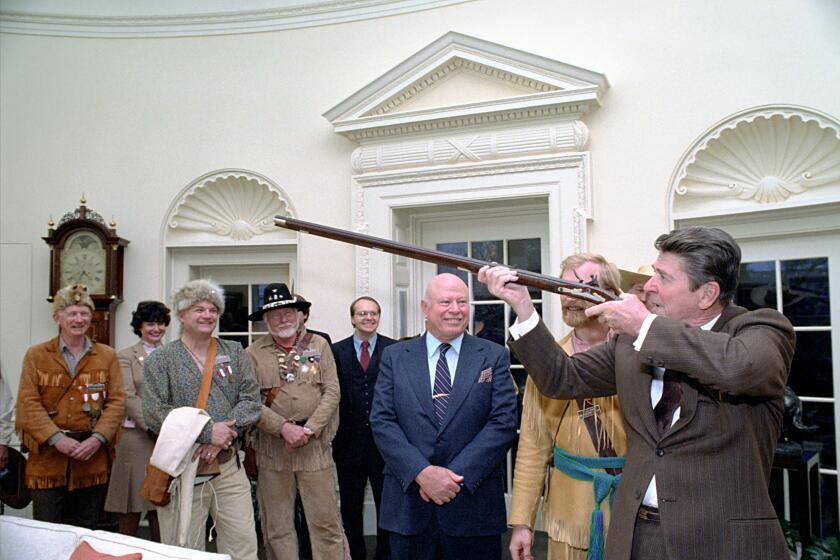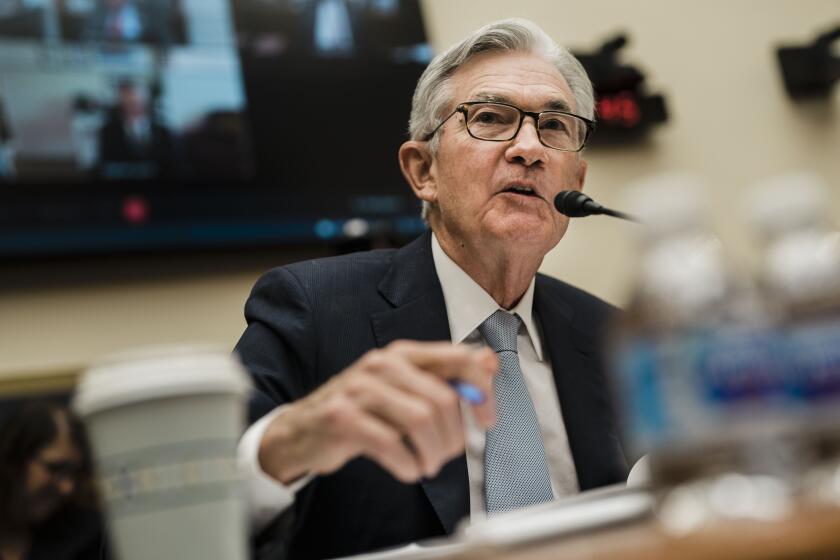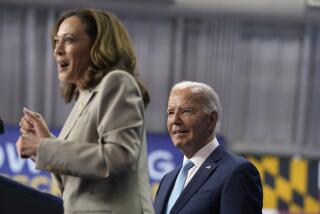Column: Republicans keep harping on inflation, but don’t have any answers for it
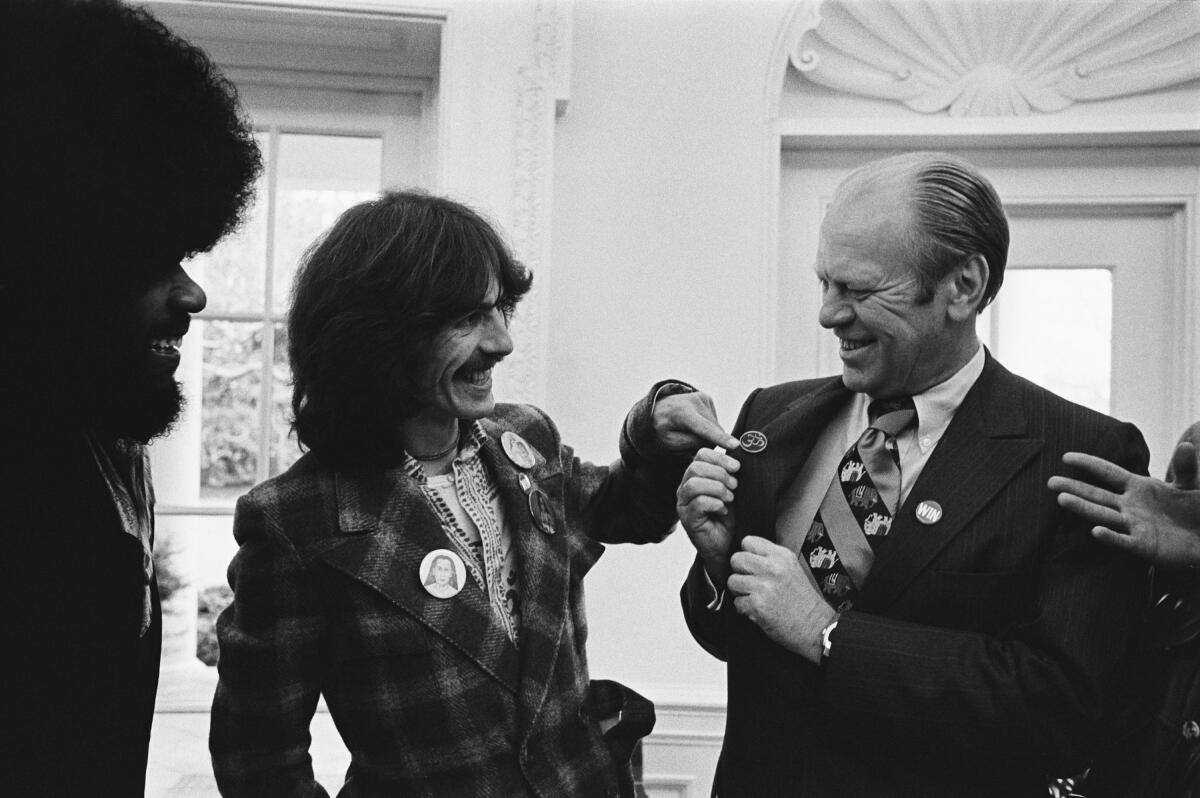
Even if you didn’t know from your household accounts that inflation has been running hot this year, your local Republican officeholders and candidates would make sure it wasn’t a secret.
As the midterm elections approach, inflation has been not only the leading issue for the GOP to flog, but sometimes it seems to be the party’s only issue.
In a way, that’s encouraging. After all, a party that talks about a single problem so relentlessly must have a solution to offer. So the Republicans must be out on the hustings offering chapter and verse about their answer to inflation, right?
We have a commitment to America, and we’re going to get back to basics.
— Rep. Andy Barr (R-Ky.) explains the GOP’s anti-inflation plan
Alas, no.
A look at the GOP’s election manifesto, the “Commitment to America” recently issued by House Minority Leader Kevin McCarthy (R-Bakersfield), reveals no specifics. Nor have Republican candidates done so during the multitude of appearances they’ve made on cable talk shows, despite specific and pointed questions by the hosts.
Get the latest from Michael Hiltzik
Commentary on economics and more from a Pulitzer Prize winner.
You may occasionally receive promotional content from the Los Angeles Times.
Here, for example, is Rep. Andy Barr (R-Ky.) on Aug. 21, responding on “Meet the Press” when Chuck Todd asked, “What is the Republican plan to deal with inflation other than not supporting Joe Biden policies?”
“Well, we have a positive agenda. We have a commitment to America, and we’re going to get back to basics. ... We don’t need more IRS agents. We need more Border Patrol agents. And we have a commonsense plan to reduce the cost of living, to lower the cost at the pump.”
But what that “commonsense plan” was, Barr didn’t disclose.
Nothing is new about this campaign technique from a minority party. It consists of repeatedly citing a problem and tying it to the party in power, assuming that voters’ impulse to “throw the bums out” will deliver electoral victory.
Truth be told, that’s often enough to win; why complicate matters by offering a specific program that might create winners and losers when you can stand smugly by and let voters assume that everybody will be a winner?
Republican leaders are threatening to take the debt limit hostage unless they get Social Security and Medicare benefit cuts.
That’s why Sen. Roy Blunt (R-Mo.), who is retiring this year, produced a word salad of electoral hubris on Oct. 23 when CNN’s Pamela Brown asked him for his inflation solution.
After mumbling, “uh, really, stabilize the economy,” Blunt skipped on to a confident forecast for election day. Voters are “going to hold the Democrats responsible. ... I think there’s no question Republicans will gain control of the House, and in a very narrow environment, just as likely as not to gain control of the Senate. But we still won’t have control of the administration, and bad regulatory policies and bad energy policies will continue to stoke what’s now a fire of inflation.”
Let’s take a closer look at McCarthy’s economic program, the “Commitment to America” promoted by Barr as the centerpiece of his party’s anti-inflation program.
Under the rubric “Fight Inflation and Lower the Cost of Living,” the document states, “After more than a year of crushing inflation, Democrats still have no plan to solve it.”
What’s the cause? The document says, “Everyone knew that wasteful Washington spending would spur inflation. Millions in hardworking taxpayer dollars were sent to luxury resorts and ski slopes, even stimulus checks to prisoners like the Boston Marathon bomber.”
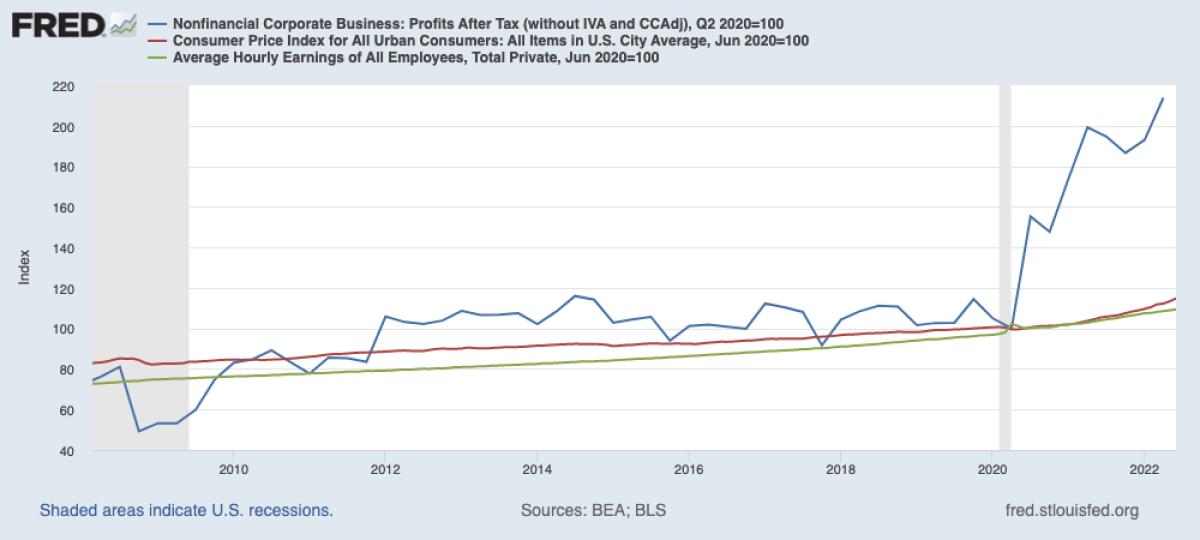
However, the “wasteful Washington spending” the document alludes to is mostly that allocated by three rounds of pandemic relief and stimulus checks, which totaled $802.8 billion, issued in the form of nearly 472 million household payments.
What the “Commitment” doesn’t say is that two-thirds of those checks and spending happened under the administration of Donald Trump.
Of the total, a single check of $1,400 went to Dzhokhar Tsarnaev, the Boston bomber — and the government has moved to seize the money to help pay for the fines and penalties levied on Tsarnaev after his conviction. Is that one check supposed to be emblematic of programs that delivered assistance to almost every American family?
As for whether or how much the pandemic stimulus actually contributed to this year’s inflation, that’s a hot topic of debate among economists. A paper by researchers at the Federal Reserve Bank of San Francisco in March posited that the stimulus programs raised inflation by 3 percentage points by the end of 2021.
But other economists disagree, arguing that instead of spending the checks, many households banked them or used them to pay down debt, neither of which was inflationary. Moreover, the important question is: What would have happened without the stimulus? The San Francisco Fed says “the economy might have tipped into outright deflation and slower economic growth, the consequences of which would have been harder to manage.”
It’s also true that, at this moment, inflation in several developed countries that did not issue generous stimulus and relief is running hotter than in the U.S., raising further questions about the impact of the American payouts.
The neoliberalism of Ronald Reagan has served only the rich, yet it still governs American economic policy. UC Berkeley’s Brad DeLong examines why in his new book.
The “Commitment to America” also claims to have a scheme to “regain American energy independence and lower prices at the pump.” A couple of problems with that. One is that the U.S. already is energy-independent — it’s been a net exporter of oil almost every month since the last quarter of 2019 and a net exporter of natural gas since mid-2017, according to government statistics.
When McCarthy says he intends to “maximize production of reliable, American-made energy” as though that will bring prices down at the pump, he’s emitting vapor.
Additional production of energy within the U.S. will simply enter the international market, where it will be subject to global price pressures such as the supply reduction caused by the Russian invasion of Ukraine and by OPEC’s decision to reduce its own output. Those are the influences driving up gasoline prices here, not the pace of production from U.S. wells.
This isn’t the first time that Republicans have stumbled in addressing inflation. In 1974, when Gerald Ford succeeded Richard Nixon as president, he was saddled with annual inflation higher than 12%.
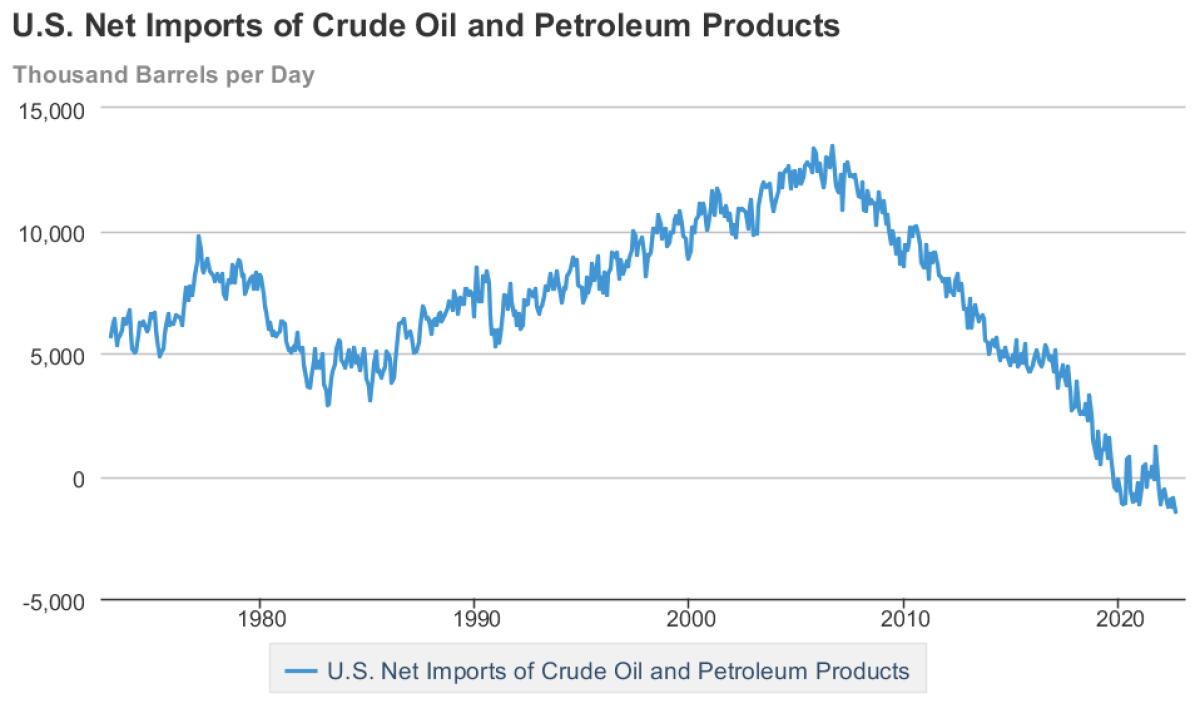
Ford’s solution was the “Whip Inflation Now” campaign, which consisted of urging Americans to “grow more and waste less” to reduce food prices and “to help save scarce fuel in the energy crisis, drive less, heat less.” The symbol of his campaign was a red lapel button reading “WIN.” Justifiably, the campaign elicited ridicule. But it had more substance than anything the GOP has offered lately.
The vacuum at the heart of Republican economic policy is especially troubling now because the U.S. economy sits on a knife‘s edge at this moment. Congress has ceded inflation fighting almost entirely to the Federal Reserve Board, where the strategy of raising interest rates sharply risks creating a recession.
Its name notwithstanding, the Inflation Reduction Act signed into law Aug. 16 by President Biden incorporated only a few inflation-fighting provisions relevant to the average household.
The Fed isn’t giving the economy time to absorb its rate increases before imposing more pain. That could leave people jobless for no reason.
One was the extension of premium assistance for buyers of health plans under the Affordable Care Act. Another capped out-of-pocket prescription costs for Medicare enrollees to $2,000 a year. A third capped the price of insulin, which has been the target of pharmaceutical profiteers for years, at $35 a month.
Those provisions will materially reduce household costs for millions of Americans. The act, however, received not a single Republican vote in either chamber of Congress.
Republican campaigners have made some vague promises about economic steps they’ll take if they win power in Congress. For the most part, these would make the economic situation for tens of millions of households worse, not better.
They would extend the tax cuts they enacted in 2017, when they controlled both chambers of Congress and the White House — a giveaway mostly to the rich and corporations that blew a hole in the U.S. budget estimated at $1.5 trillion to $3 trillion over 10 years — and one without any lasting positive effect on economic growth.
They’re talking about benefit cuts for Social Security and Medicare recipients, which would certainly make it harder for those households to make ends meet. They’ve talked about refusing to increase the government’s debt ceiling next year, using it to extract benefit cuts. As I’ve reported, this is playing with fire.
Corporations are raising prices at the fastest rate since 1955, driving inflation higher.
A hard cap on the national debt would provoke an unprecedented default on Treasury securities, which would drive interest rates through the roof, and delay benefit checks, which wouldn’t be good for millions of families. It would be, in short, exactly the antithesis of Sen. Blunt’s “stabilizing the economy.”
The truth is that the federal government, through fiscal and monetary policies, has already done much to undercut inflation. The effects are already visible. Home prices have been spiraling down to earth, largely as a result of Fed policies that have driven mortgage rates above 7%. Auto prices, another component of inflation statistics, have started to drift downward.
Another major inflationary factor, the logjam at the ports that began last year as the consumer economy began to open up, has almost disappeared. Container volume at the Port of Los Angeles is down about 11% in the current fiscal year from last year.
The backup of container ships waiting to unload at the ports of Los Angeles and Long Beach has fallen from 109 in January to four ships now, according to Marine Exchange of Southern California statistics cited by the Wall Street Journal. The cost of shipping a container from East Asia to the U.S. West Coast has fallen from about $20,000 a year ago to less than $2,500.
Undoubtedly, more can be done. President Biden is jawboning oil companies about their huge run-up in profits, but that’s just one industry. Corporate profits have soared since mid-2020 while average worker earnings have remained muted — a little-noticed spur to inflation.
Has the GOP embraced those ideas? Of course not — corporate managements and the big oil companies are its patrons. Instead of pointing the finger at them, Republicans complain that Social Security beneficiaries are collecting too much and the rich are staggering under the burden of the lowest marginal federal tax rates in more than half a century.
If you want to know why that party has nothing to offer on inflation, it’s because anything that really would address it in a way that helps average Americans would hurt its friends. We can’t have that, can we?
More to Read
Get the latest from Michael Hiltzik
Commentary on economics and more from a Pulitzer Prize winner.
You may occasionally receive promotional content from the Los Angeles Times.
